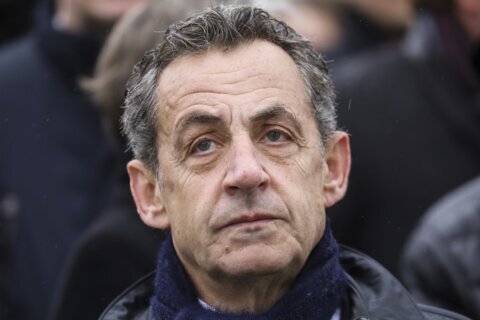MUNEEZA NAQVI
Associated Press
NEW DELHI (AP) — India launched an index Friday to measure air quality across the nation that is home to some of the most polluted cities in the world.
It will measure eight major pollutants that impact respiratory health in cities with populations exceeding 1 million in the next five years and then gradually the rest of the country, Environment Minister Prakash told reporters. The Air Quality Index will warn residents when pollution levels shoot past dangerous levels.
The World Health Organization said earlier this year that the Indian capital had the worst air quality in the world, surpassing Beijing, a statement that New Delhi has vehemently disputed.
Air monitoring sensors around the landlocked Indian capital routinely register levels of small airborne particles at “hazardous” levels, especially in winter. The levels are three to four times New Delhi’s own sanctioned limit, rivaling Beijing.
Like the Chinese capital, New Delhi has gone through rapid economic development, raising living standards but also spewing out loads of pollution.
Decades of policies that favored economic decisions over environmental concerns have taken their toll. The numbers of cars on the roads of New Delhi have doubled in the last decade and years of booming construction has kicked up countless clouds of dust.
Javadekar said it wouldn’t be “business as usual anymore” and the government was committed to improving air quality as part of a cleanliness drive Prime Minister Narendra Modi launched earlier this month.
There are various ways to measure pollution, but comparisons have generally focused on the microscopic particulate matter, sometimes called black carbon or soot, which can lodge in a person’s lungs and fester over time.
In New Delhi, levels of PM 10 — particulate matter that is 10 micrometers in size — touched 400 micrograms per cubic meter last winter. That’s four times the city’s legal limit of 100, and well above the World Health Organization’s recommended limit of 20.
While the Chinese capital acts aggressively on high pollution days — closing schools and factories and taking government vehicles off the road — India doesn’t have a warning mechanism and until a few years ago the matter was hardly ever discussed.
The index will measure levels of PM 10 and the even tinier PM 2.5 as well six other indicators, including lead, ammonia, carbon monoxide and nitrogen oxide, and then calculate overall pollution. The warning levels would be color coded and come with specific health warnings that could be easily understood by lay people, Javadekar said.
The index will be up for review on the ministry’s website for 45 days to seek public opinion before it is functional.
Advocacy and research group Center for Science and Environment lauded the announcement but said in a statement that the measure needed to be rolled out quickly to protect public health.
Copyright 2014 The Associated Press. All rights reserved. This material may not be published, broadcast, rewritten or redistributed.







